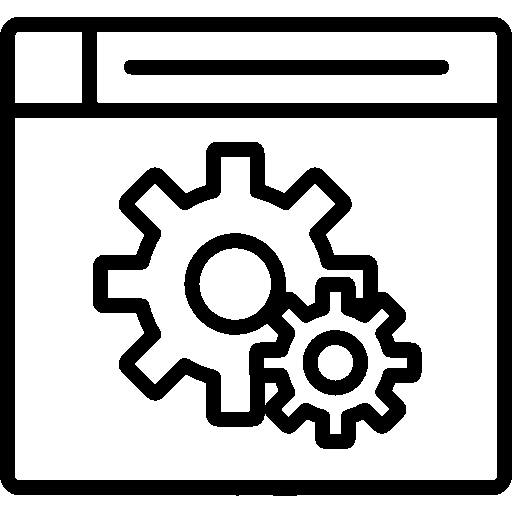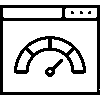- Products
- Platform
- Solutions
- Customers
- Support
- Pricing
 Website & Mobile & E-commerce
Website & Mobile & E-commerce
 CRM
CRM
 Operation & ERP
Operation & ERP
 Productivity
Productivity
 Support
Support
 Community
Community
 Learn
Learn
Application Support Point

Create a chart of accounts. List the accounting receipts. Get trial balance, balance sheet, income statement reports. Create a journal, general ledger.
- Version History
- Application Features
- User Manual
- FAQ
- Community
Definition
A general ledger application is a software used to record, track and report the financial transactions of businesses. This application helps track the financial status and performance of a business by managing income and expenses, assets, liabilities and capital accounts. General ledger allows accounting books to be kept digitally and financial reports to be generated automatically.
Aim
The purpose of the general accounting application is to enable businesses to track their financial status and make financial reports by recording their financial transactions regularly and accurately. This application aims to make the financial processes of businesses more efficient and to ensure legal compliance by automating accounting processes.
Key Benefits
-
It increases the reliability of financial data and reduces errors by ensuring that all financial transactions are recorded accurately and regularly.
-
By automating accounting processes, it reduces the need for manual calculations and data entry, thus saving time and labor.
-
It automatically generates various financial reports such as income statement, balance sheet, and cash flow statement and helps businesses monitor their financial performance.
-
It ensures legal compliance and facilitates audit processes by creating reports in accordance with tax returns and other legal requirements.
-
By enabling analysis of financial data, it helps business managers make strategic decisions and improve financial planning.
-
By recording all financial transactions, it ensures traceability of past transactions and supports financial auditing processes.
-
By monitoring inventory and cash flow, it optimizes the financial position of the business and facilitates liquidity management.
-
By speeding up and simplifying accounting processes, it increases the overall efficiency of the business and reduces costs.
-
It ensures data security and confidentiality by storing financial data securely.
-
It provides a flexible and user-friendly experience by offering features that can be adapted to different business needs.
Entrance
It is the login screen of the General Accounting application.

Chart of Accounts
This is the screen where the account plans are displayed.

Account Code on the Chart of Accounts screen, Account name, Debt, Receivables and Balance information are listed in a table.
Accounting Vouchers
This is the screen where accounting vouchers are displayed.

On the Saved Receipts screen, Receipt Date, Receipt Number, Journal Number, Plug Type, Document Type, Document No. Document Date , Payment Method , Description information is listed.
Reports
Reports are divided into three parts: Trial Balance, Balance Sheet, and Income Statement.
Trial balance

Account Code on the balance screen, Account name, Currency , Debt Receivable, Debt Balance, Receivable Balance information is provided in a table form.
Balance

Title on the balance sheet screen, Period, Net Profit and Loss, Total Assets, Total Resources , Creation Information are listed in a table. By clicking the Add New button, Period, Date Range information is entered.
Income Statement

Title on the Income Statement screen, Period, Net Profit and Loss, Creation Information is listed in a table. By clicking the Add New button, Period and Date Range information is entered.
Accounting Books
Accounting Books are divided into two as Journal Ledger and General Ledger.
Journal

Title on the Journal Ledger screen, Period, Journal Number , Total Debt, Total Receivables, Creation Information is included. By clicking the Add New button, Period, Date Range information is entered.
General Ledger

Title on the General Ledger screen, Period, Journal Number , Total Debt, Total Receivables, Creation Information is included. By clicking the Add New button, Period, Date Range information is entered.
Transactions
Transactions are divided into three groups: Create Journal Number, Reflection Transactions, E-Ledger.
Create Journal Number

Date on the Create New Year Number screen, Journal Number, Receipt Number, Receipt Type , Description, Debt, Receivable, Contains balance information.
Reflection Operations

On the Reflection Operations screen, Template Name, Receipt Number, Transaction Performer, Contains Transaction Date information.
E-Ledger

Detailref on the e-book screen, entryref, linenumber, linenumbercounter, accmainid, accmainiddesc, accsubid, accsubdesc, amount, debitcreditcode, postingdate, documenttype , doctypedesc, document number, documentreference, entrynumbercounter, documentdate, payment method, detail comment, erpno, divisionno, entered by, entereddate, entry number, entrycomment information is included.
Settings
The settings document can be accessed via the relevant menu.
Please click for related content.
General Information
This is the screen where the Sub Account is defined.

To add a Sub-Account, enter the Node Type, Parent Level, Account Code, and Title information.
Account Transactions
This is the screen where account transactions are displayed.

Account transactions History, Receipt Number, Journal Number, Plug Type, Explanation, Debt, Receivable, Balance information is included. Accounting voucher is added by pressing Add New button.

To add an accounting voucher, Voucher Date, Reference Code, Voucher No, Voucher Type, Document Type, Payment Method, Account Code, Account name, Explanation, Debt (TRY), Receivable (TRY), Delete, Voucher Description information is filled in.
Edit Accounting Card
This is the screen where the accounting card is edited.

Node Type, Parent Node, Account Code, and Title information are edited on the Accounting screen.
General Settings
Settings are customized by selecting the settings to be used according to the company's preference from the General Settings menu.

The color of the application is saved by selecting the preferred color.
Preliminary Accounting Integration can be activated.
Foreign Currency Account is available.
Account plans can be shown in breakdown.
Reference codes for which accounting vouchers will be created; GR or R can be selected.
Reference codes for which journal numbers will be created; GR or R can be selected.
Period Settings
This is the screen where periods are displayed.

The Periods screen includes Title, Period, Active, Default information. A period is added by clicking the Add New button.

To add a period, enter the Title, Period, Active, Default, Order, Chart of Accounts Transfer information.
Reflection Templates
This is the screen where the Reflection Templates are displayed.

On the Templates screen, Title, Code, Period, Active information is entered. The reflection template is added by clicking the Add New button.

To add a template, enter Title, Code, and Period information.
Automatic Numbering
Automatic Numbering allows a certain field to automatically increase with each new record.

Fill in the Prefix and Suffix fields as desired or leave them blank.
Give a starting value to the Auto-Increment Number field. For example, if you give 1000, the following numbers will go as 1000, 1001, 1002...
When a value is entered, a preview is displayed on the right for information purposes.
Authorized Users
Having certain authorities in the company is an important element that increases organizational efficiency and workflow. Authorization ensures a clear distribution of tasks and responsibilities.

On the Authorized Users screen, users are given the required authorizations and saved.
Questions
Ask questions and get answers from other Entranet users.

















